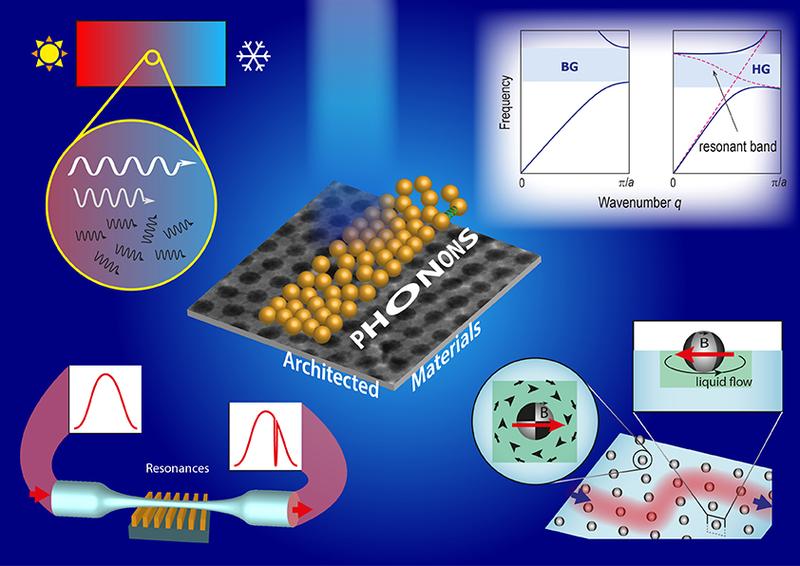

Small and nanoscale soft phononics (SmartPhon)
MPI-P
Soft materials that are periodic on the submicrometer length scale act as both hypersonic phononic and visible light photonic crystals. This means: they coherently scatter elastic waves as well as light in the visible region. The challenges in understanding and engineering phonon soft matter interactions originate from the fact that phonons, unlike photons, do not propagate in a vacuum and therefore do not move with the speed of light.
However, together with his team at the MPI-P, Fytas has been able to organize soft matter to go hypersonic. With his Brillouin spectroscopy, a technique that records the frequency and wavelength of phonons through the inelastic scattering of laser light, the Greek scientist has retrieved the dispersion relation for phonons propagating in transparent structures.
“In order to achieve such crystal structures, various self-assembled methods as well as powerful spectroscopic techniques are necessary,” says Fytas. Due to his pioneering contribution in the field of soft matter based phononics, the scientist receives an ERC Advanced Grant for outstanding research leaders amounting to over 2.2 million euros. With this funding, he plans to extend his research project “Small and nanoscale soft Phononics” (SmartPhon) in order to tune phonon propagation in hierarchical materials and to engineer strong wave-matter interactions in the subwavelength range with metamaterial behavior.
Further experiments to be conducted in Germany and Greece
While also relying on strong international relations with several partner institutes, in August 2016, Fytas will start another phase of experiments, conducted at the MPI-P in Mainz, Germany, as well as at the Institute of Electronic Structure and Laser and at the University of Crete, Greece. His findings are anticipated for diverse applications in the field of optomechanics developing tunable responsive filters, one-way phonon waveguides and compact acousto-optic sensors. Moreover, heat management technologies directing the heat flow and its recovery profit from Fytas’s discoveries as well as the research area of materials metrology, which by means of measuring nanomechanical properties, offers insights into the physics of materials.
About George Fytas:
Born in Athens, Greece, Geroge Fytas is professor of Physical Chemistry at the Department of Materials Science & Technology of the University of Crete and Head of the Polymer & Colloid Group of IESL-FORTH in Heraklion, Crete, Greece. As an external member, he has also been conducting research at the MPI-P since 1998 focusing on phonon propagation in structured materials and dynamics including the conformation of complex macromolecular and supramolecular systems. Fytas holds a PhD in Physical Chemistry of the Technical University of Hannover, Germany, and wrote his habilitation thesis at the University of Bielefeld, Germany. The scientist is a Fellow of the American Physical Society and has received a Humboldt Senior Research Award.
http://www.mpip-mainz.mpg.de/erc-advanced-grant












